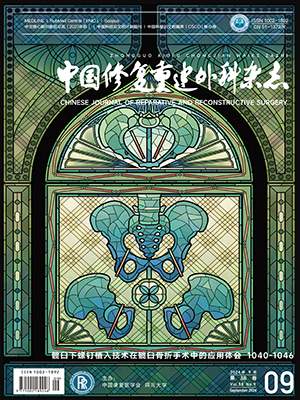OBJECTIVE To measure the isometric point of the attachment site in femur during the reconstruction of posterior cruciate ligament (PCL). METHODS Seven fresh knee specimens from cadavers were adopted in this experiment. The anterior, posterior, proximal, distal and central points of the PCL’s femoral attachment site were respectively anchored to the middle of the PCL’s tibial attachment site by the trial isometer wires. The length changes of the intra-articular part of the wires were recorded while the knee was flexed from 0 degree to 120 degrees by a continuous passive motion(CPM) machine. RESULTS The maximal length changes in every points were compared. It showed that the length change in anterior point was the biggest, the distal point was less than that of anterior point, and the proximal point was the least. There was significant difference between proximal and posterior points, but no significant difference between proximal and central points, neither between central and posterior points. All of the maximal length changes of proximal, central and posterior points were not greater than 2 mm. CONCLUSION The femoral tunnel for the PCL reconstruction should be located at the proximal point, which is the middle point of upper edge of femoral attachment site. The selected point for femoral tunnel also may be moved slightly in the direction to central or posterior points according to the needs of operation.
Citation: L IAN G Jie,WU H ai shan.. TESTING FOR ISOMETRY DURING RECONSTRUCTION OF TH E POSTERIOR CRUCIATE L IGAMENT. Chinese Journal of Reparative and Reconstructive Surgery, 2000, 14(2): 68-71. doi: Copy




